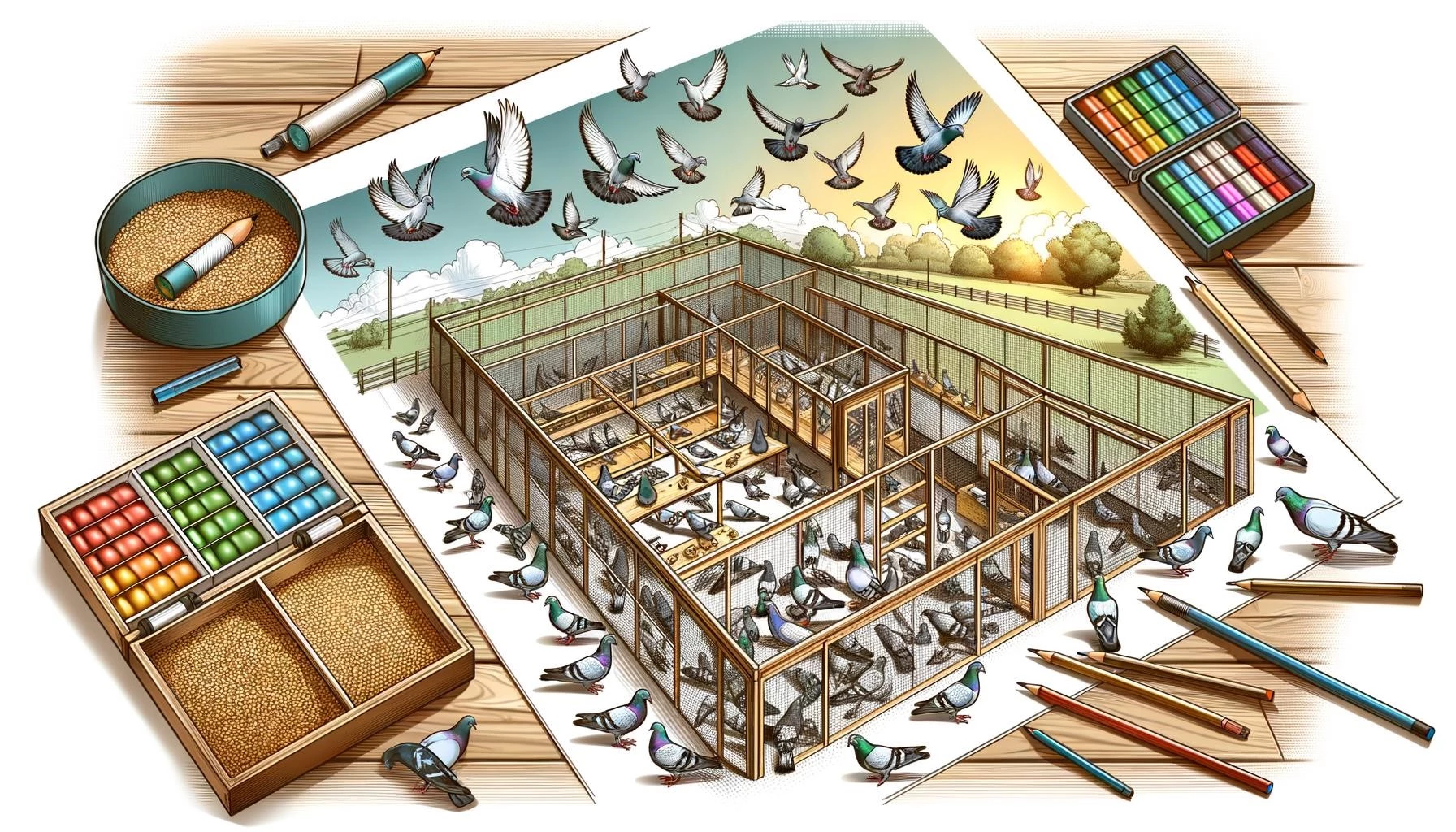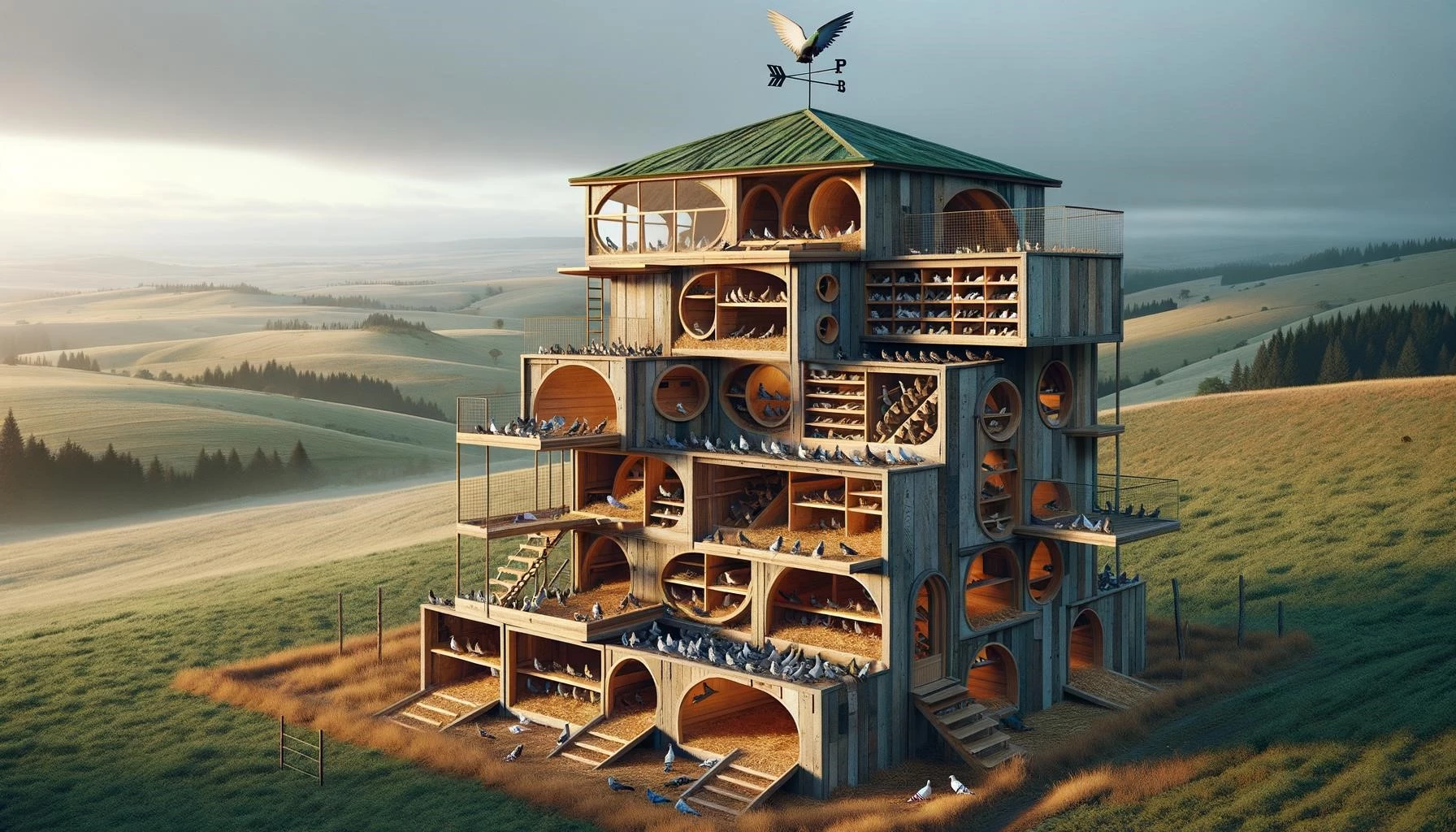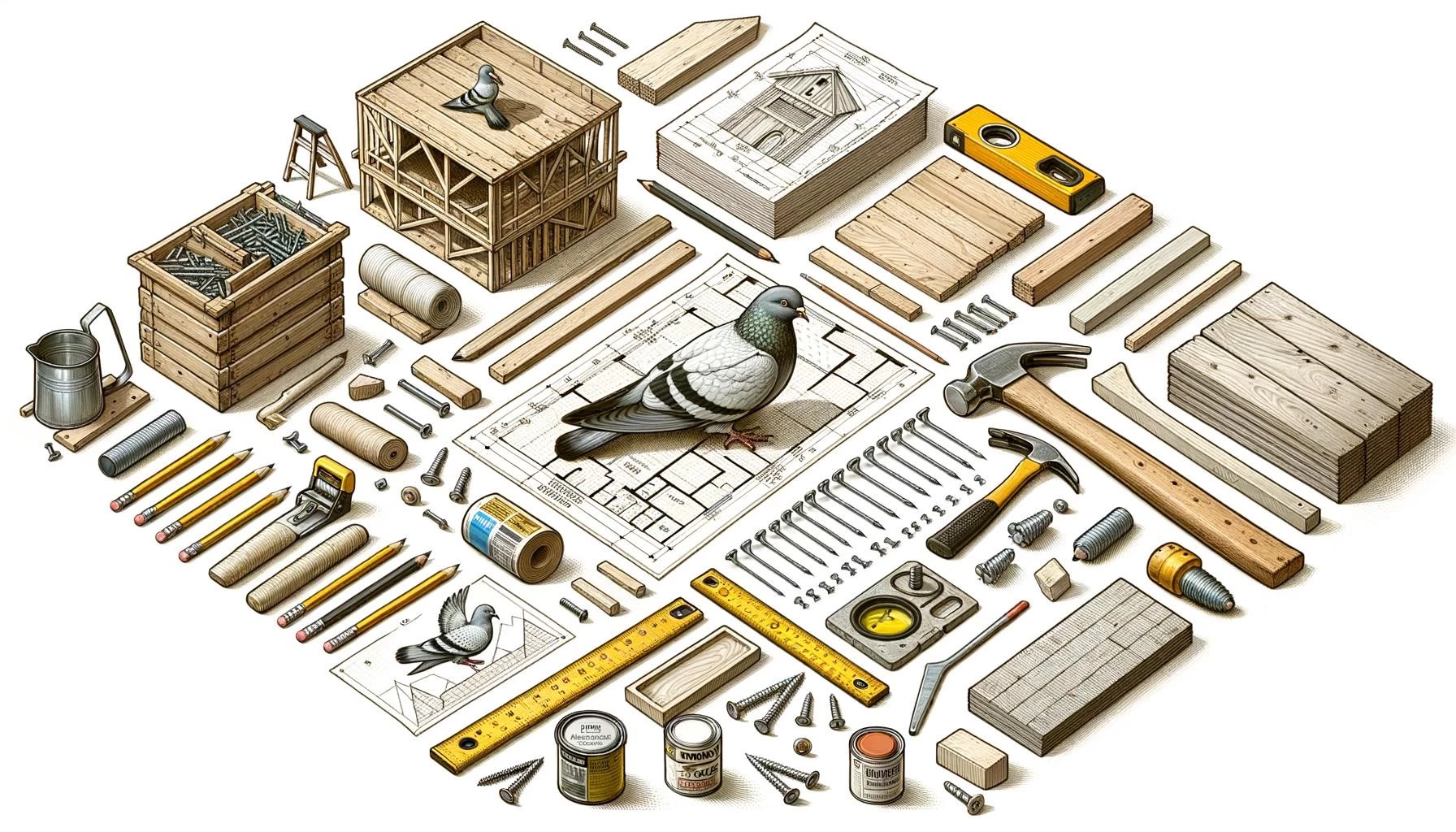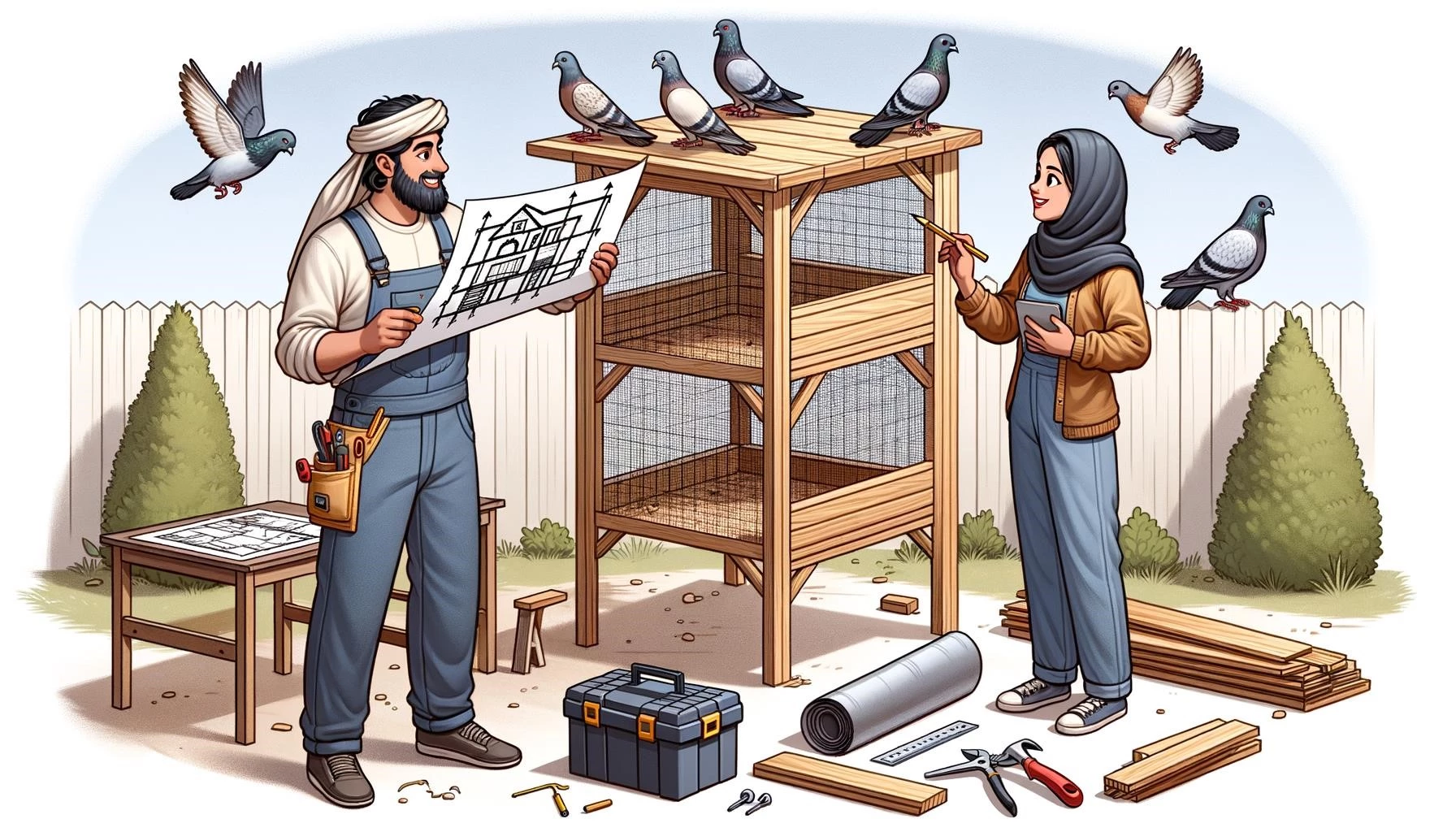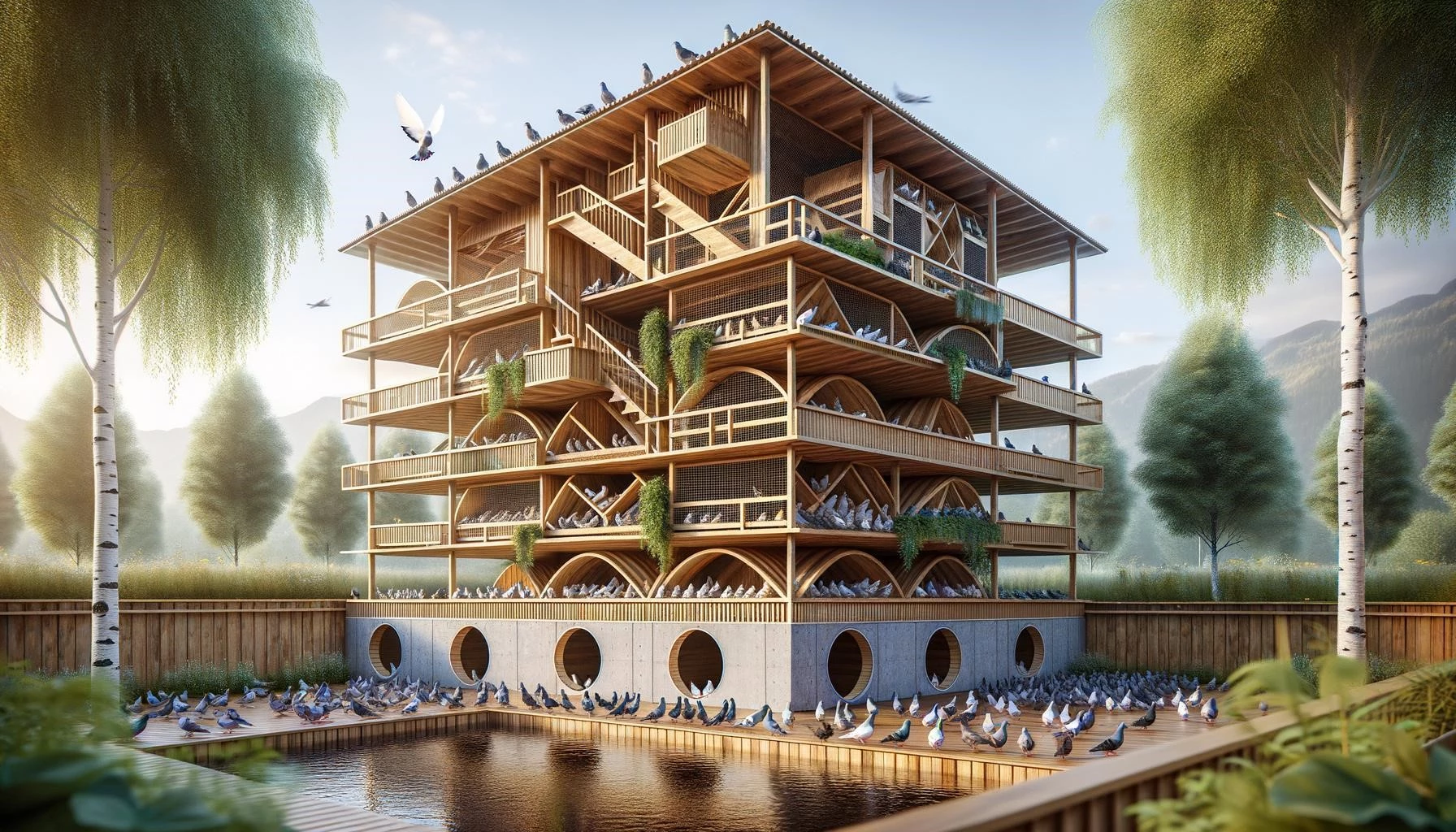Creating an optimal environment for our winged companions goes beyond mere shelter. The design, size, and shape of a pigeon loft, along with its insulation and accessibility, play a pivotal role in the birds’ health and well-being. With an emphasis on efficient space utilization, proper ventilation, diligent cleaning, and population management, this guide will navigate you towards a loft that ensures your pigeons not only survive but thrive. Let’s explore the intricacies involved in designing a pigeon loft that serves as a safe, comfortable, and conducive habitat.
Key Takeaways
- Pigeon lofts should provide enough space for the birds to move, exercise, and stretch their wings.
- The size of the loft will depend on the number of pigeons and their purpose (breeding, racing, etc.).
- The design of the loft should consider insulation, ventilation, accessibility, and ease of cleaning.
- Proper ventilation is crucial for maintaining air quality and preventing the buildup of harmful gases.
- Regular cleaning and inspection of the loft are important for maintaining hygiene and preventing the spread of diseases.
- Population control is essential to prevent overcrowding and maintain a healthy environment.
- Consideration should be given to the introduction of new birds and the responsible management of eggs.
The design of a pigeon loft plays a crucial role in providing a safe and comfortable habitat for the birds. When planning the design, there are several factors to consider:
- Size: The size of the loft will depend on the number of pigeons you plan to house. A general rule of thumb is to allot approximately 1 square foot of space per pigeon. However, this can vary depending on the breed of pigeon and the purpose of the loft.
- Shape: Pigeon lofts can come in various shapes, including rectangular, square, and L-shaped. The shape should be chosen based on the available space and the number of pigeons you plan to keep.
- Insulation: Pigeons are sensitive to extreme weather conditions, so it’s important to ensure that the loft is properly insulated. This will help regulate the temperature inside the loft and protect the birds from excessive heat or cold.
- Doors and Windows: Functional and accessible doors and windows are essential for easy entry and exit for the pigeons. They also provide natural light and fresh air circulation within the loft. Consider the positioning of doors and windows to promote optimal airflow.
- Cleaning and Maintenance: Choose a design that allows for easy cleaning and maintenance. This includes removable trays or floors for convenient cleaning of droppings and regular disinfection of surfaces.
Ventilation in Pigeon Lofts
Proper ventilation is crucial for maintaining a healthy environment inside the pigeon loft. Good ventilation helps circulate fresh air, remove excess humidity, and prevent the buildup of harmful gases such as ammonia. Here are some important considerations for ventilation:
- Orientation and Positioning: Plan the orientation and positioning of windows and vents to promote optimal airflow. Strategically placed windows and vents ensure that fresh air enters the loft while stale air and gases are expelled.
- Adjustable Vents: Installing adjustable vents allows you to control the airflow based on weather conditions. This flexibility is especially important during extreme weather to maintain a healthy and comfortable environment inside the loft.
- Avoid Drafts: While ventilation is important, avoid creating drafts that directly blow on the pigeons. Air should move in front of the pigeons but not directly over them to minimize the risk of respiratory issues.
Cleaning and Population Control in Pigeon Lofts
Cleaning and regular maintenance are vital to keep the pigeon loft hygienic and prevent the spread of diseases. Here’s what you need to consider:
- Regular Cleaning: Establish a routine cleaning schedule that includes removing and replacing bedding material regularly to prevent the accumulation of droppings and dirt. Disinfect surfaces to prevent the spread of diseases.
- Inspection for Damage: Regularly check the loft for any signs of damage, such as cracks or holes, that could provide entry or escape routes for pests. Promptly repair any damages to ensure the security and integrity of the loft.
- Population Control: Monitoring the population size of your pigeon loft is important to prevent overcrowding and maintain a healthy environment. Consider culling or relocating excess birds and implementing breeding and egg management strategies to control population growth.
By considering these aspects of design, ventilation, cleaning, and population control, you can create a pigeon loft that provides a safe, comfortable, and thriving habitat for your feathered friends.



